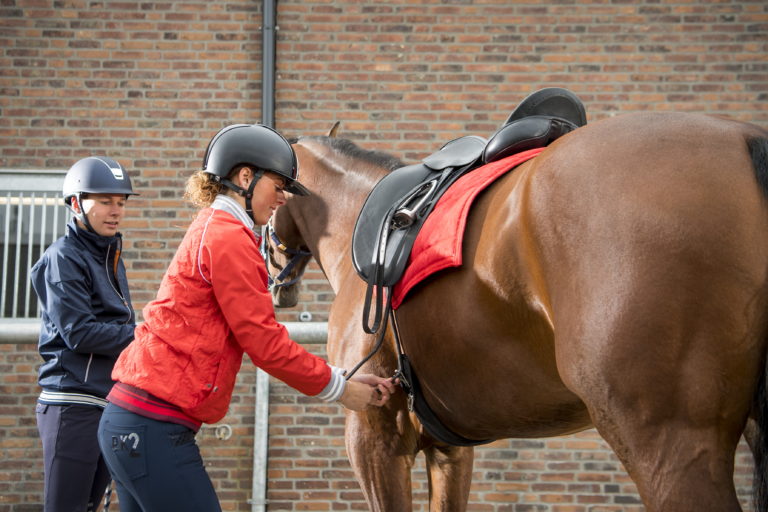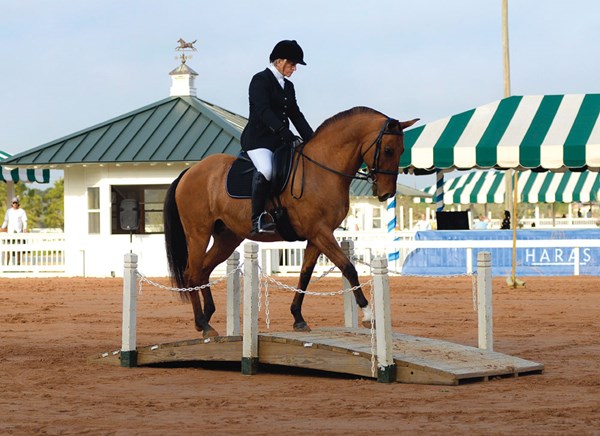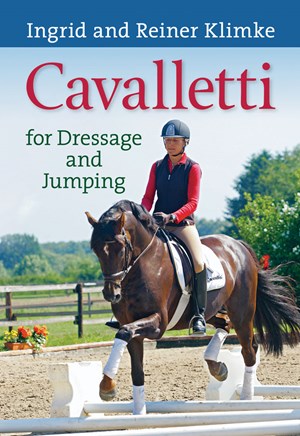
Riding over cavalletti is the key to success for Olympic champion Ingrid Klimke, as it improves the horse’s basic gaits, develops rhythm, suppleness and cadence and increases fitness. Cavalletti for Dressage and Jumping explains how to work with cavalletti on the longe and gives new schooling ideas to improve dressage work with suggested cavalletti layouts. This revised edition of the book, originally written by the late Dr. Reiner Klimke, one of the most successful dressage riders of all time, and daughter, Ingrid, features updated and extended text as well as new photos. The following excerpt is used with permission from Trafalgar Square Books.
When training a riding horse, the aim is to introduce natural gymnastic work. This is the way to ensure that his joints become more supple and his stamina and muscle tone improve. The horse’s way of going is totally dependent on his muscles and the contraction and relaxation of the different muscle groups are essential for strengthening them. Cavalletti work is very useful for this because it develops strength in particular muscles by asking the horse to move in a specific and controlled way. For example, the horse becomes more sure-footed as a result of lifting his feet high to go over the cavalletti and placing them back on the ground between the poles. Cavalletti allow more demands to be made on the legs without compromising the quality of the gaits, namely walk, trot and canter. However, from the beginning of training, work on a horse’s physical growth must go hand-in-hand with his psychological development. Cavalletti work must be systematic and gradually increase in difficulty. There is a risk of injury if cavalletti are over-used or if the layout of the poles interferes with the natural rhythm of the horse’s gaits, so they must be placed carefully and work must be incremental (see sidebar on p. 46). This is important because if a horse is encouraged to work when he is tense or in a forced outline, muscle growth can be affected, with the wrong muscles developing and others becoming fatigued or losing strength (atrophy).
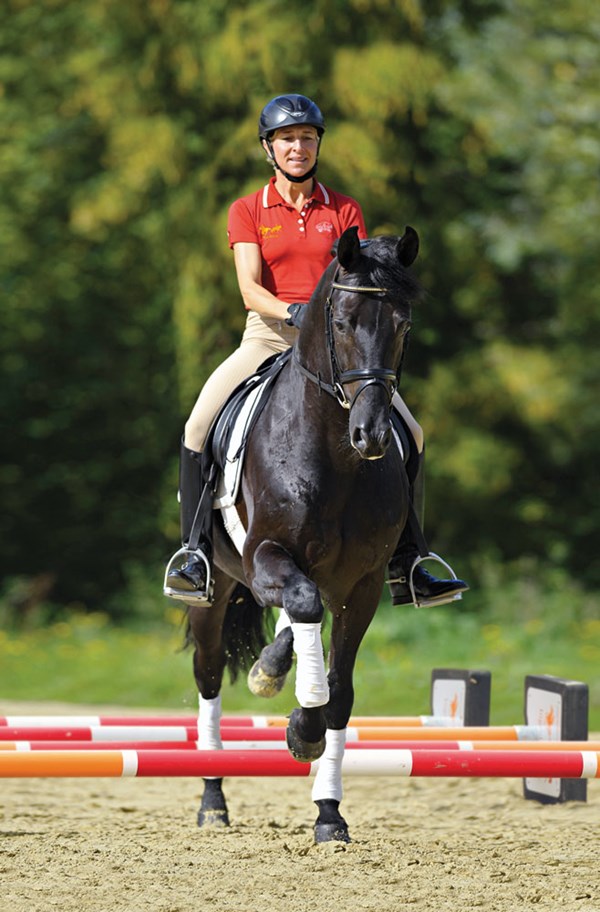
Cavalletti work is also very useful for loosening muscles and relieving stiffness, especially with horses who have been badly ridden. For example, riding a horse over cavalletti with his neck lowered and stretching forward and downward will help specific back muscles to contract and relax, effectively loosening any tightness. The horse will quickly regain his natural rhythm. After only a short time he will take more weight on his haunches and become lighter in his forehand. His back will start to swing and the rider can just sit quietly in the saddle.
Cavalletti work opens many possibilities for improving the horse’s suppleness and strength. Using cavalletti in conditioning work is particularly advantageous when you are developing a precise fitness regime. Work over low poles also helps early schooling. One of the first challenges a young horse has is learning to balance with a rider on his back. By teaching him how to deal with this problem in an arena, you can prepare him for hacking out and jumping.
Cavalletti work enables the rider to understand the psyche of the horse and learn how to bring out the best in him. It can bring out the character and temperament of the horse—does he remain calm or become exited? Altering the layout and using different exercises that suit the specific horse can make a difference in his behavior. In dressage training, cavalletti improve the quality of the walk and trot in particular. Evenly placed poles can be used to work on the rhythm and regularity of movement, while having to step higher improves impulsion and cadence, which is a useful stepping-stone to training for passage.
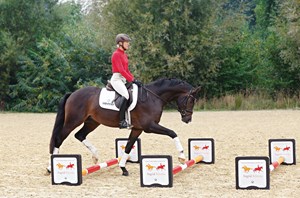
Six-Week Plan
This program is for a horse in his second year of training.
FIRST WEEK
Monday
Day off.
Tuesday
• 20 minutes loosening exercises on both reins in all three gaits, finishing with trot and walk over cavalletti on straight lines.
• Improve suppleness using transitions and walking on a long rein over cavalletti, to improve the clarity of the walk rhythm.
• Riding forward in trot
Wednesday
No cavalletti work.
Thursday
Cavalletti work in trot, finishing with lengthening the strides to improve swing, impulsion and ground cover.
Friday
No cavalletti work.
Saturday
No cavalletti work, except loosening up over cavalletti on a long rein or free-schooling over cavalletti.
Sunday
Ride a dressage test.
SECOND WEEK
Monday
Day off.
Tuesday
No cavalletti work.
Wednesday
Cavalletti work in walk over shorter distances to improve collected walk.
Thursday
No cavalletti work.
Friday
No cavalletti work except
for loosening up over cavalletti in rising trot on straight lines.
Saturday
Cavalletti work in trot, finishing in sitting trot over shortened distances to improve pushing power (impulsion).
Sunday
Ride a dressage test.
THIRD WEEK
Monday
Day off.
Tuesday
Longe over cavalletti.
Wednesday
No cavalletti work
Thursday
No cavalletti work except
for loosening up on a
long rein.
Friday
As Thursday the first week.
Saturday
No cavalletti work.
Sunday
Ride a dressage test.
FOURTH WEEK
Monday
Day off.
Tuesday
As Tuesday the first week.
Wednesday
No cavalletti work.
Thursday
Cavalletti work in walk, finishing with wider distances to improve ground cover.
Friday
No cavalletti work.
Saturday
As Saturday of the second week.
Sunday
Ride a dressage test.
FIFTH WEEK
No cavalletti work this week; instead, concentrate on dressage, loosening up by hacking out.
SIXTH WEEK
Repeat most of the important exercises from the first three weeks. Cavalletti work on circles can also be introduced. On days that you have problems, remember to simplify the exercises and repeat the session the next day. Aim to do cavalletti work only two or three times a week to avoid the risk of asking too much, resulting in strain or injury.
Various Cavalletti Layouts
Have a plan for each training session and decide beforehand which cavalletti layout will be most suitable for it. In my experience, there are five different types of layout.
The simplest arrangement is to lay several cavalletti on the long side of the arena at right angles to the track. The advantage of this is that the horse simply has to continue on the track, so there is less chance of him running out to the side. Another advantage is that the rider does not need to pay so much attention to the horse and can concentrate on improving her seat. This means this layout is particularly useful for the less experienced horse and rider, helping them to build confidence.
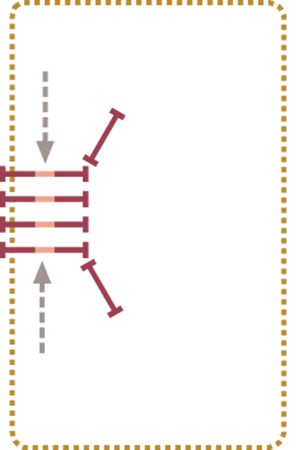
A slightly more difficult layout is to place the cavalletti on the inside track. This has the advantage that the horse and rider do not have to go over the cavalletti on every circuit of the arena since they can go past them on the outside. However, you have to deliberately ride on the inside track to place the horse correctly for the cavalletti. It can be made easier by placing wings on either side to prevent the horse from running out.
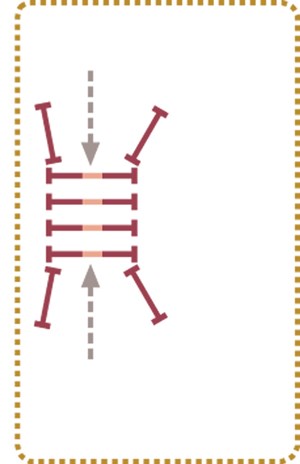
Another option is to place cavalletti on the centerline. I think this is very useful for changing the rein on the centerline, and for riding over the poles on both reins. You can also set up the cavalletti for riding over them on the diagonals. In my experience, this is the most difficult layout to do. It is not that easy to place the cavalletti properly on the chosen diagonal of the school. However, it is worth trying because it is a good test of dexterity for young riders on experienced horses.
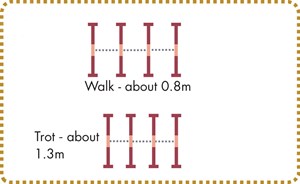
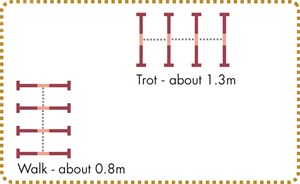
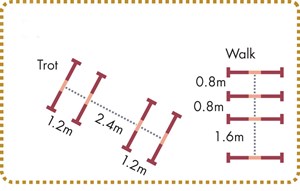
Ideally, it is best to have separate layouts for both walk and trot, so there is no need to make any alterations during a lesson. Finally, it is the responsibility of the trainer to choose a suitable layout to suit every horse and rider in the lesson, although, of course, advanced riders can choose a layout to suit themselves.








